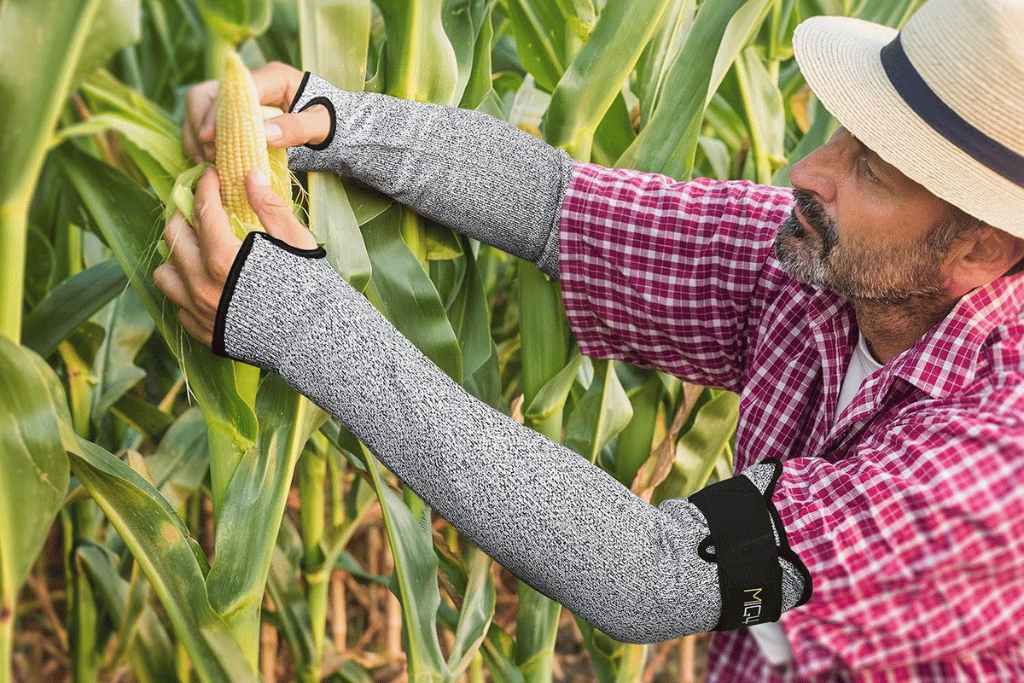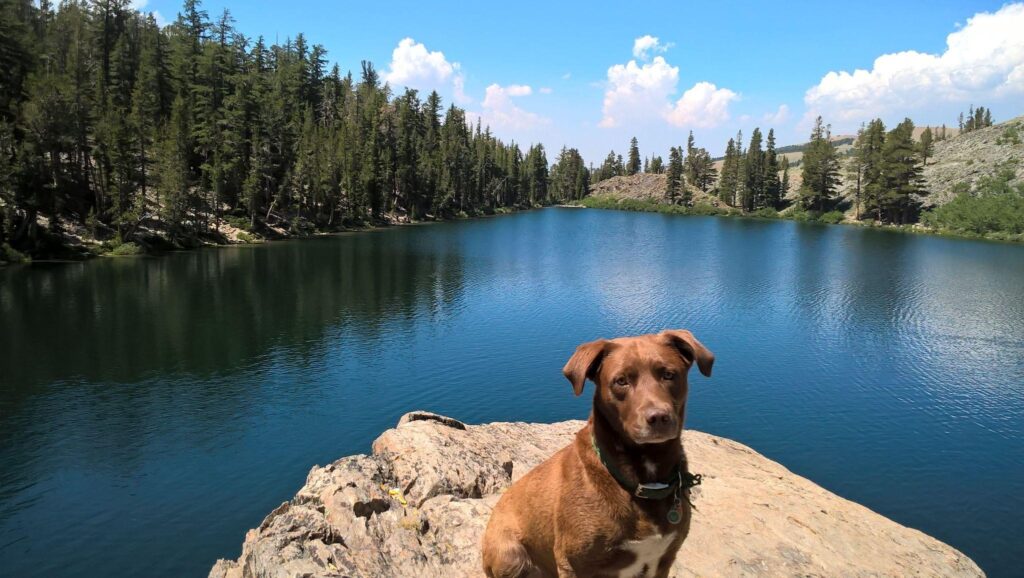
If you’re like me and love your canine companion with all your heart, the last thing you ever want is to see them suffering.
I can personally attest to this, as my dog Calvin has gone through a handful of painful situations. And I’ll admit, they probably caused me more stress than him!
But he’s a really rough and tumble mutt, so it never surprised me how he handled all of his injuries like a champ.
The list is too long and gruesome to recount, so I’ll spare the readers.
Fortunately, despite all of his medical misadventures, Calvin has never experienced a severe allergic reaction.
Some dogs do however, have the misfortune of coming into contact with plants that cause hives and rashes.
To spare your pooch any painful allergic irritations, we’ve compiled a list that will tip you off to some problematic plants.
Afterwards we will mention some helpful home remedies so you can quickly soothe the symptoms should your dog encounter any of these plants.
To start off, let’s examine the leading causes of hives in dogs.
What Causes Hives in Dogs?
The technical term for hives is urticaria. It is defined as skin inflammation that causes red bumps and patches on the surface of a dog’s skin.
Watch out for these risk factors to keep your dog healthy and hive free.
- Bug bites or stings
- Food allergy
- Environmental allergens
- Plant irritants
- Chemical exposure
- Adverse effects of drugs
- Too much sun
- Excessive exercise
- Genetic defects
- Stress/anxiety
Fortunately, plant allergens are not among the most common cause for hives in dogs.
Some common plants can be quite troublesome though, so let’s take a look.
Plants That Cause Hives in Dogs
Us humans think we have it bad during allergy season. But imagine being a dog when piles of pollen are dropping to the ground.
Relying on their noses constantly, they must be sniffing and rolling around in untold amounts of pollen.
The poor things!
It collects in their fur and eventually makes it down to their skin where it can really cause issues.
Unfortunately, there are a lot of plants that can potentially cause this problem for your pup.
The good news is that this list identifies and describes all of the most common hive causing plants to keep an eye out for.
Read on to learn what to watch out for when you’re wandering in the woods or simply taking a walk around the neighborhood or a stroll in the park.
Birch Trees

Blooming birch trees can produce lots of pollen that may trigger allergic reactions in dogs and humans.
Oak Trees
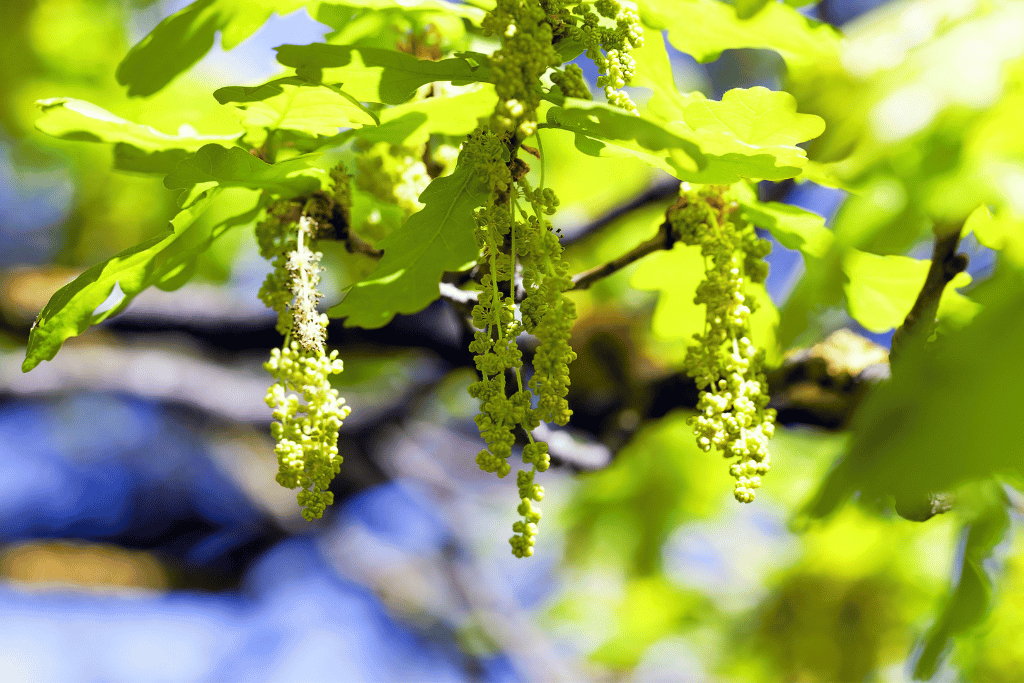
In the springtime shortly after oak trees leaf out they produce pollen sacks that could cause allergies in people and pups.
Willow Trees
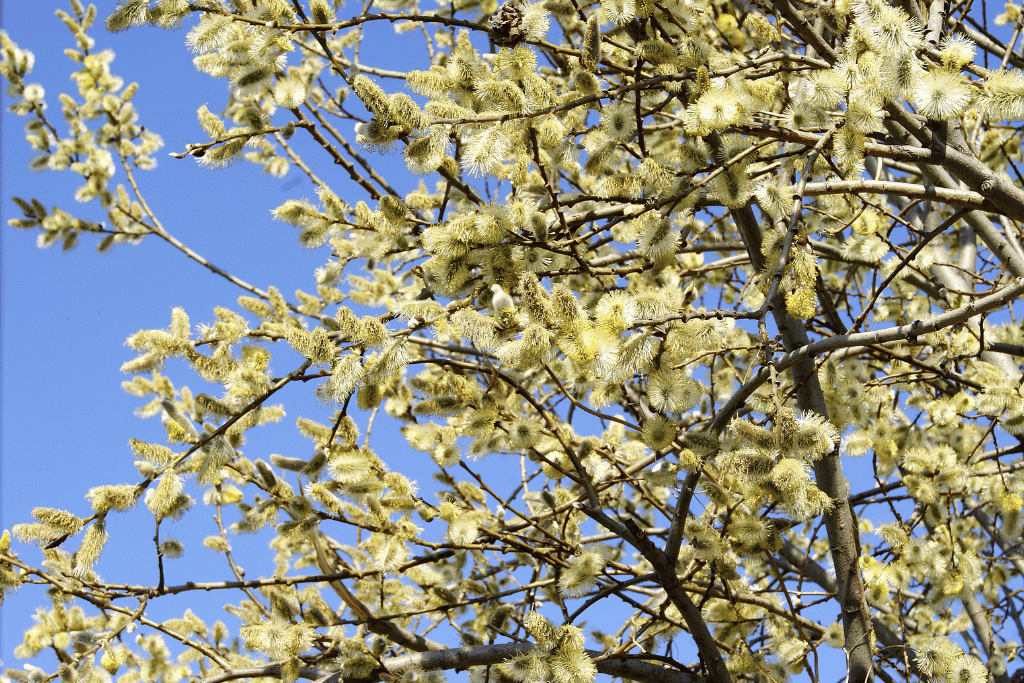
Affectionately known as pussywillows, the fuzzy pollen producing pods of the willow tree may lead to negative allergic reactions.
Poplar Trees

The cotton-like precursor to poplar seeds looks harmless enough, but it releases pollen that may agitate some humans and animals.
Bottlebrush

Vibrant bottlebrush flowers produce pollen that can disturb dogs and people.
Fruitless Mulberry

You might see it all walking down Mulberry Street, so keep an eye out for these blooming buds. The pollen is a known allergen to humans and canines.
Juniper
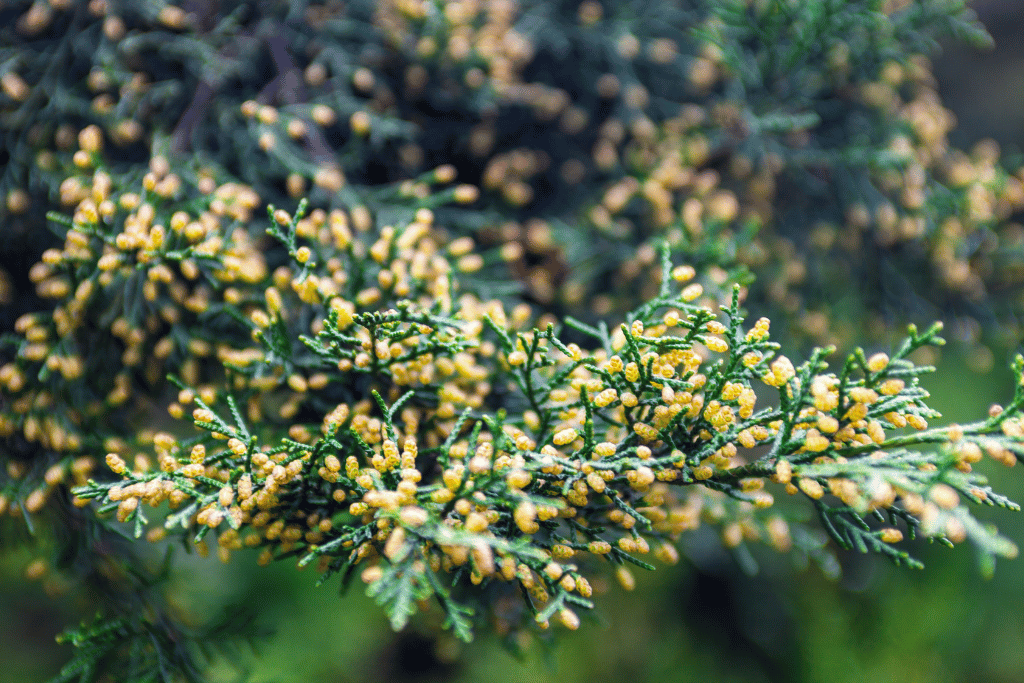
Only male juniper plants produce pollen, which can be an irritant for some. Male plants will have yellowish pollen sacks whereas female juniper develops blue berries. Direct skin contact with male plants could cause hives in dogs so be careful around this evergreen shrub.
Primrose

The shrubby, herbaceous wild flower can cause skin irritation if it is directly contacted. As pretty as it is, you should steer your dog clear of this flower if you encounter it in the forest.
Sage Brush
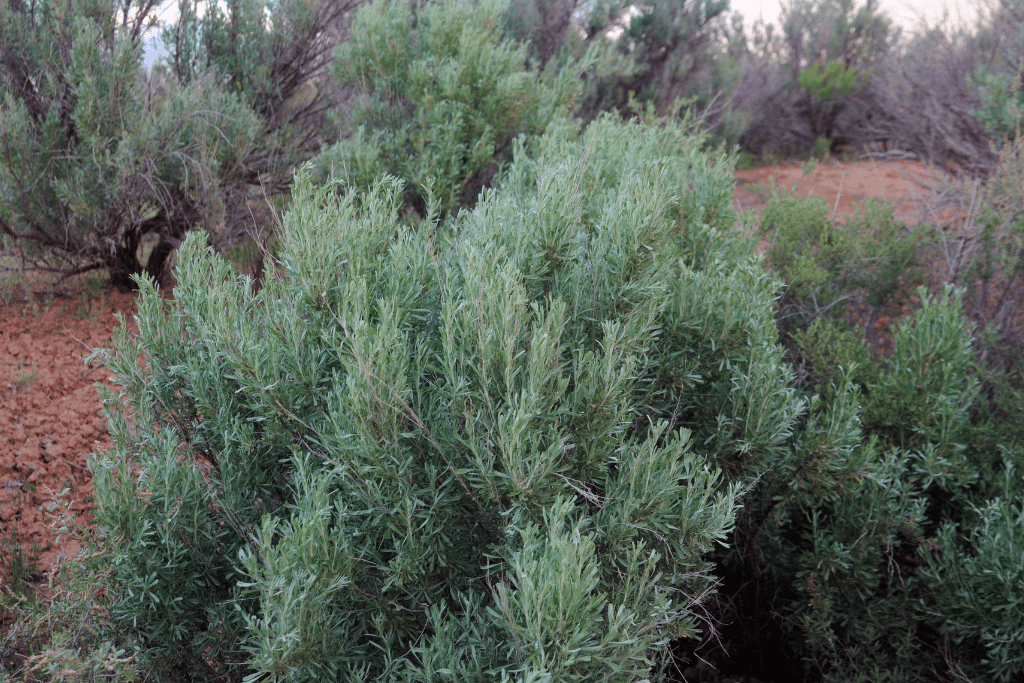
Big bushes of sage brush grow wild out west and their pollen and foliage can prove to be an irritant for pups.
Euphorbia

Types of euphorbia plants come in all shapes and sizes. Try to familiarize yourself with them because they can cause allergic reactions with their pollen and through skin contact. Their sap is also poisonous to pets.
Yew
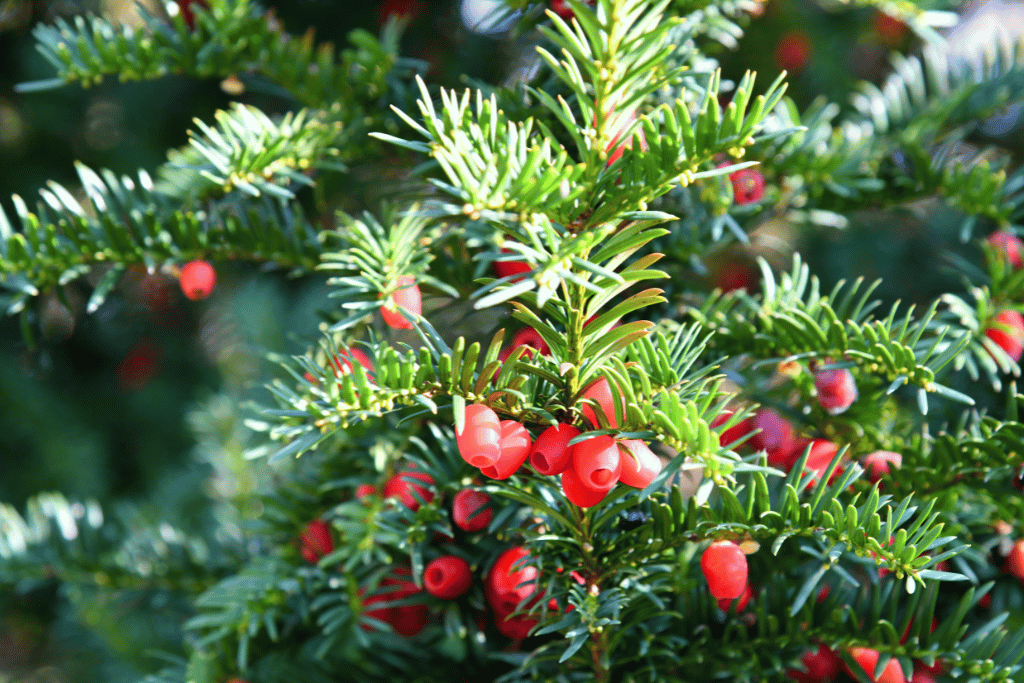
Pollen and direct contact with the common evergreen shrub can cause symptoms of allergies. The females produce familiar bright red berries that are toxic, so keep a close eye on your dog if you happen to pass by yew plants in your neighborhood.
Sheep Sorrel
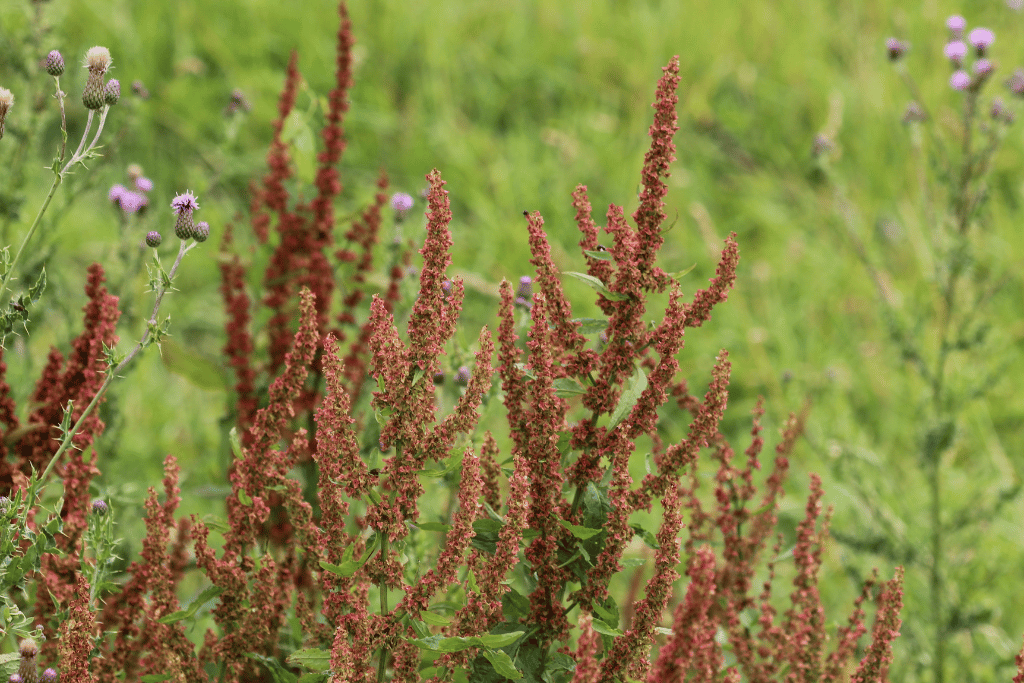
Called by many names (red sorrel, field sorrel, sour weed,) sheep sorrel is typically regarded as a perennial weed. Beware of its pollen which may disturb your doggy’s sensitive skin.
Wormwood
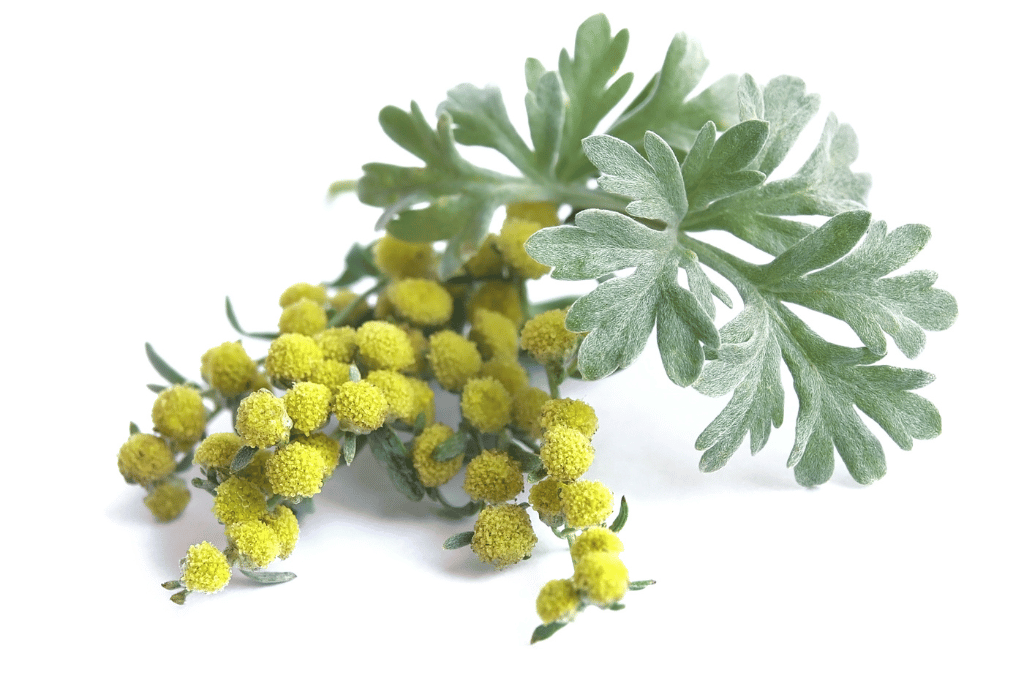
Widely naturalized in north America, wormwood grows wild in forested areas. Try to avoid interacting with its pollen which is known to cause skin irritation in dogs.
Ragweed

Commonly mistaken for goldenrod, ragweed is a primary contributor to allergy season. It’s capable of producing a billion grains of pollen per season which waft effortlessly with the wind. Many people become victims of its pollen and dogs can suffer from it as well.
Day Lily

When walking your dog be careful around all lily varieties. Pollen and direct contact with the plant can cause allergic reactions.
Alliums

Alliums such as onions, garlic, leeks and chives will go to flower if you let them; and they actually look quite pretty. But keep your pets away. Direct contact and pollen can cause adverse reactions and the plant itself is toxic to pets.
Alliums may not treat your pets well, but they make great companions in the garden.
Wandering Jew

Wandering Jew is a popular houseplant, but may not be the best choice for pet owners. At the very least keep them well out of the reach of dogs and cats. Direct contact with the plant and exposure to its pollen can negatively affect curious pets.
Learn more about how to prapogate Wandering Jew.
Elephant Ear

Another plant commonly kept indoors, elephant ears should be kept away from pets. Contact with the plant can cause skin irritation for your dog.
Bermuda Grass

Remember rolling around in the grass when you were a kid and getting all itchy? Well it’s not so much the blades of grass as it is the pollen that will agitate your dog’s skin. The tropical grass should be kept short to prevent it from developing pollen.
Castor Bean

The prickly red fruits of the castor plant are toxic to pets and children. The good thing is they’re easy to spot and avoid. Pollen and direct contact with the plant can also cause skin irritation for your dog.
Orchard Grass
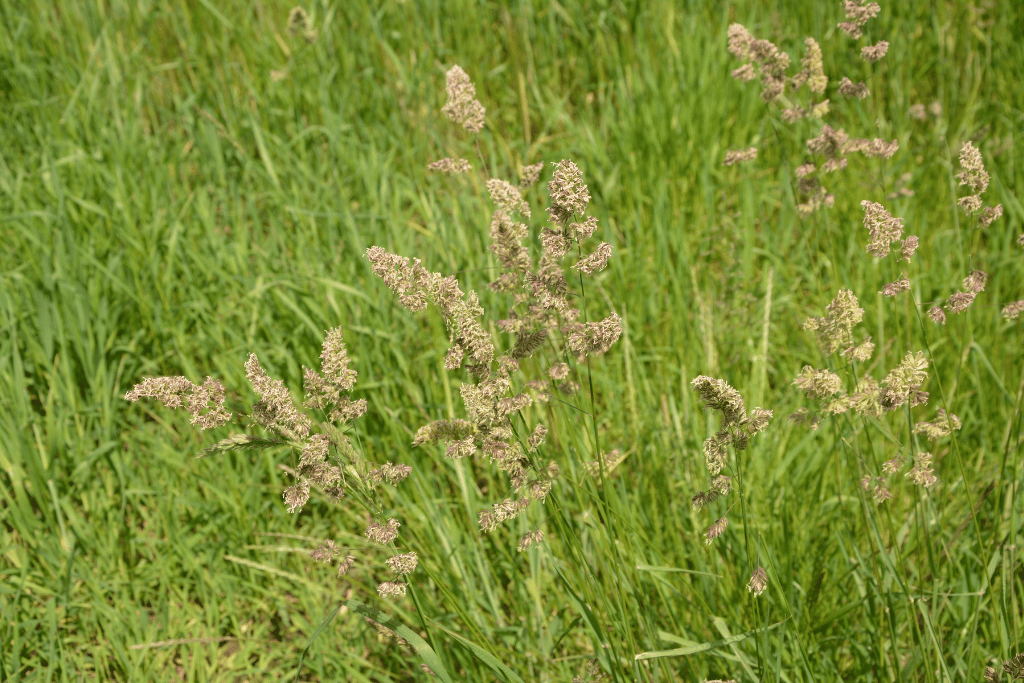
Orchard grass belongs to the bluegrass family and produces tall blades topped with triangular flowerheads. Be careful about letting your dog romp wildly through grassy fields, they might ended up covered in irritating pollen.
Red Cedar Mulch
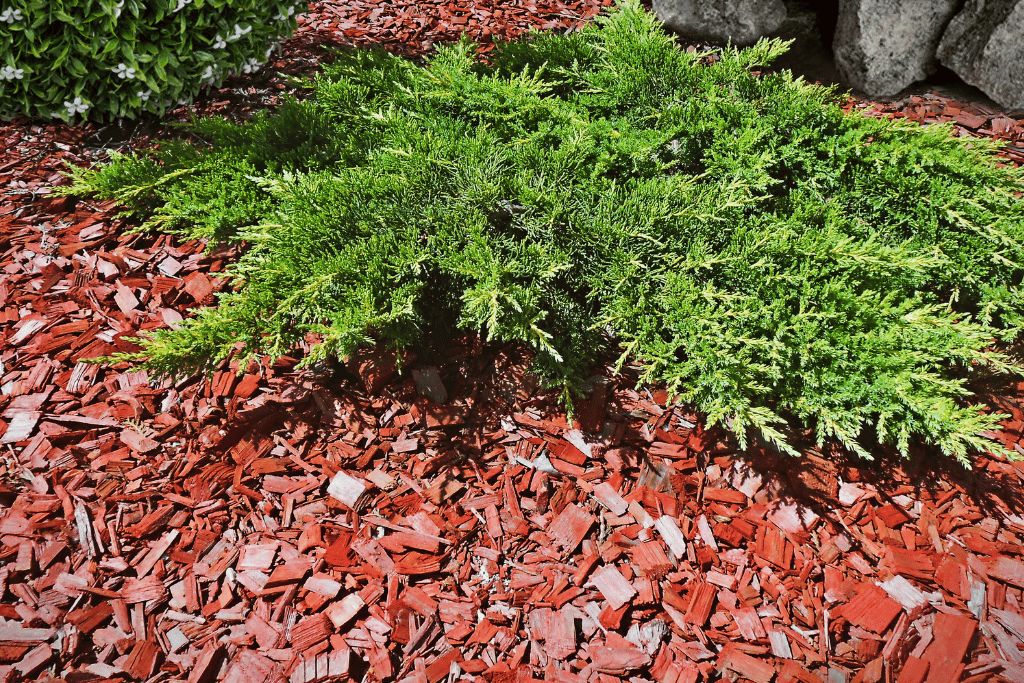
Cedar bark mulch can aggravate a dog’s skin if it’s directly exposed. Train your canine pal to keep out of the garden beds to avoid this nuisance.
Read more about inorganic vs organic mulch.
Cocoa Mulch
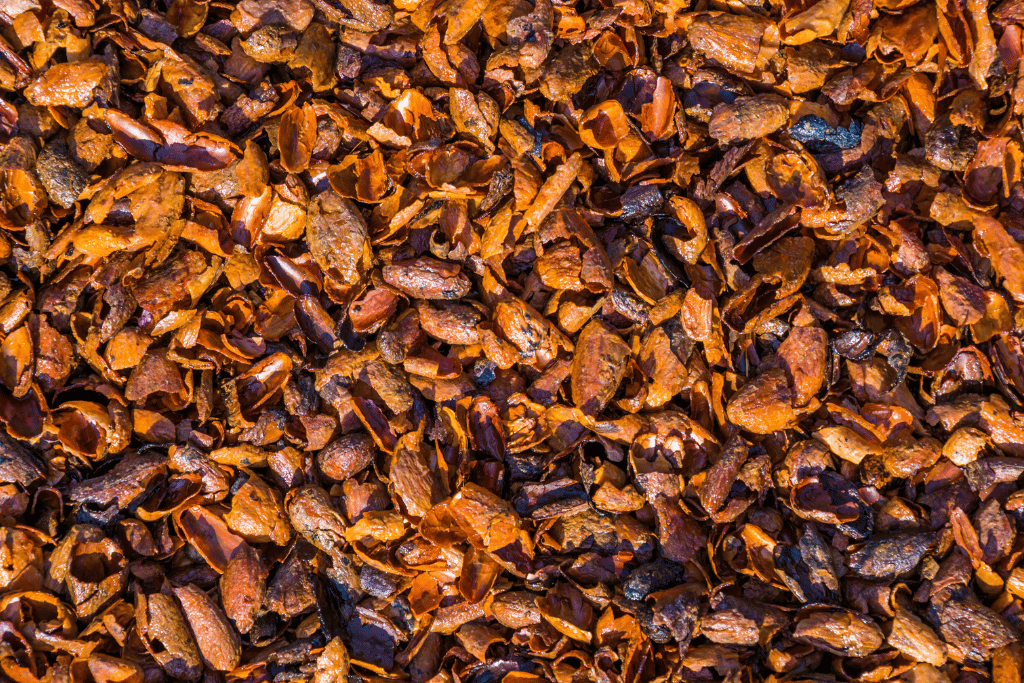
Cocoa mulch is made from the pulverized shells of cocoa beans. It will agitate your dog’s skin and is extremely harmful if consumed. Dog owners should not consider using this mulch around their homes.
Discover the in depth details of chocolate mulch.
Just because a particular plant falls on this list doesn’t mean it will definitely give your dogs hives.
Most likely it won’t, yet it’s good to know what could possibly trigger an allergic reaction.
Home Remedies for Hounds with Hives
It wouldn’t be proper to discuss problems without offering solutions.
Here are some fantastic home remedies that will relieve your dog’s hive outbreak.
Oatmeal Baths
Oatmeal has anti-inflammatory properties and will form a protective coating on your dog’s skin, trapping in the moisture and preventing it from drying out. It will soothe and protect irritated problem areas.
Grind down rolled oats in a blender and add a couple tablespoons of the powder to a few cups of warm water. Massage the mixture into your dog’s skin and let it soak in for 15 minutes. Rinse it out and gently dry off your dog’s coat.
Green Tea Baths
Fill a tub with warm water and steep multiple green tea bags for 10-15 minutes. Plop your pup into the tub and let them soak as long as they like.
The antioxidants in green tea will soothe their skin, calming inflammation and relieving itchiness.
Apple Cider Vinegar Spray
Mix half purified water and half apple cider vinegar into a spray bottle. Lightly mist it onto hives or irritated skin.
The antiseptic and anti-inflammatory properties of the handy home tonic make a perfect remedy for itchy rashes and hives.
Chamomile Tea
The tiny apple smelling flower has been used medicinally for millenia. Brewed as a tea and cooled down, it can be applied directly to irritated areas of your dog’s skin. It’s 100% safe for a dog to consume as well, so it can be administered orally to help relieve inflammation issues.
Plain Yogurt
Beneficial bacteria contained in yogurt can help soothe painful hives on your dog’s skin. Make sure that it’s plain, unflavored yogurt with no added sugar. Otherwise the problem will be exacerbated.
Directly apply the plain yogurt to your dog’s skin, slowly massaging it into problem areas. Let it sit for a few minutes and then give the dog a quick rinse with warm water and dry them off.
Coconut Oil
A superfood with medicinal merits, coconut oil has antifungal, antibacterial and antiviral properties. Coconut oil will moisturize the skin and treat irritation and inflammation when applied directly.
Starting with a small amount, gently work the oil into affected areas of your dog’s skin. Let it absorb for a while and it can then be rinsed out or left in to continue to protect and moisturize the skin.
As a side note, I’ve consistently fed my dog coconut oil mixed in with his food throughout his life. He is healthy and has a handsome, shiny coat that I attribute to the steady supplementation of coconut oil in his diet.
Being able to treat your dog and alleviate their symptoms from home will give you great satisfaction and in my opinion, is the best solution.
But there is no substituting professional medical treatment. So if your dog shows signs of panting, drooling, swelling or going into shock or seizures during an allergic reaction, get them to the vet as soon as possible.
How to Keep Your Pup Hive Free

It isn’t possible to completely prevent your dog from ever getting hives, unless you never leave the house. And of course, that would be unrealistic and unhealthy for both pet and owner.
While some of the plants in this list are capable of causing hives in your dog, chances are the majority will not.
So the best course of action to take is observe the plants in the environment where you and your dog typically take your walks. Take note if any of the plants listed are present in your area.
If and when your dog gets hives, you’re able to retrace your steps and deduce what they came into contact with.
It’s also possible that if your dog has hives, it came from another source that wasn’t a plant. Bug bites and adverse reactions to food and medication are much more common causes of hives.
So be on a look out for potential allergen plants, but don’t stress over it. If nothing else you’ll become more educated about what plants are growing in your area while being vigilant for the sake of your dog’s health.
It’s a win-win for the flora and Fido!


